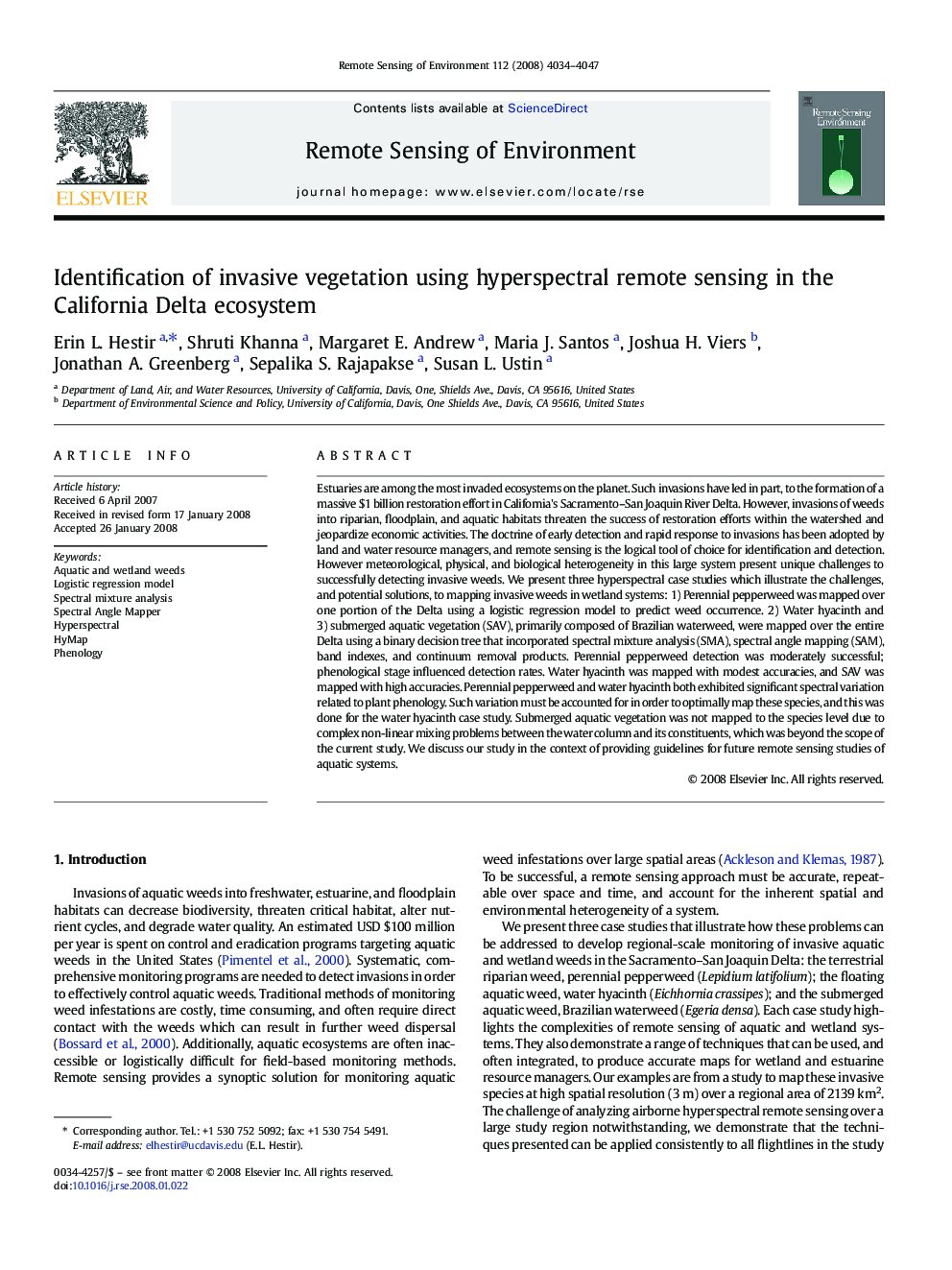| کد مقاله | کد نشریه | سال انتشار | مقاله انگلیسی | نسخه تمام متن |
|---|---|---|---|---|
| 4460490 | 1621323 | 2008 | 14 صفحه PDF | دانلود رایگان |

Estuaries are among the most invaded ecosystems on the planet. Such invasions have led in part, to the formation of a massive $1 billion restoration effort in California's Sacramento–San Joaquin River Delta. However, invasions of weeds into riparian, floodplain, and aquatic habitats threaten the success of restoration efforts within the watershed and jeopardize economic activities. The doctrine of early detection and rapid response to invasions has been adopted by land and water resource managers, and remote sensing is the logical tool of choice for identification and detection. However meteorological, physical, and biological heterogeneity in this large system present unique challenges to successfully detecting invasive weeds. We present three hyperspectral case studies which illustrate the challenges, and potential solutions, to mapping invasive weeds in wetland systems: 1) Perennial pepperweed was mapped over one portion of the Delta using a logistic regression model to predict weed occurrence. 2) Water hyacinth and 3) submerged aquatic vegetation (SAV), primarily composed of Brazilian waterweed, were mapped over the entire Delta using a binary decision tree that incorporated spectral mixture analysis (SMA), spectral angle mapping (SAM), band indexes, and continuum removal products. Perennial pepperweed detection was moderately successful; phenological stage influenced detection rates. Water hyacinth was mapped with modest accuracies, and SAV was mapped with high accuracies. Perennial pepperweed and water hyacinth both exhibited significant spectral variation related to plant phenology. Such variation must be accounted for in order to optimally map these species, and this was done for the water hyacinth case study. Submerged aquatic vegetation was not mapped to the species level due to complex non-linear mixing problems between the water column and its constituents, which was beyond the scope of the current study. We discuss our study in the context of providing guidelines for future remote sensing studies of aquatic systems.
Journal: Remote Sensing of Environment - Volume 112, Issue 11, 15 November 2008, Pages 4034–4047